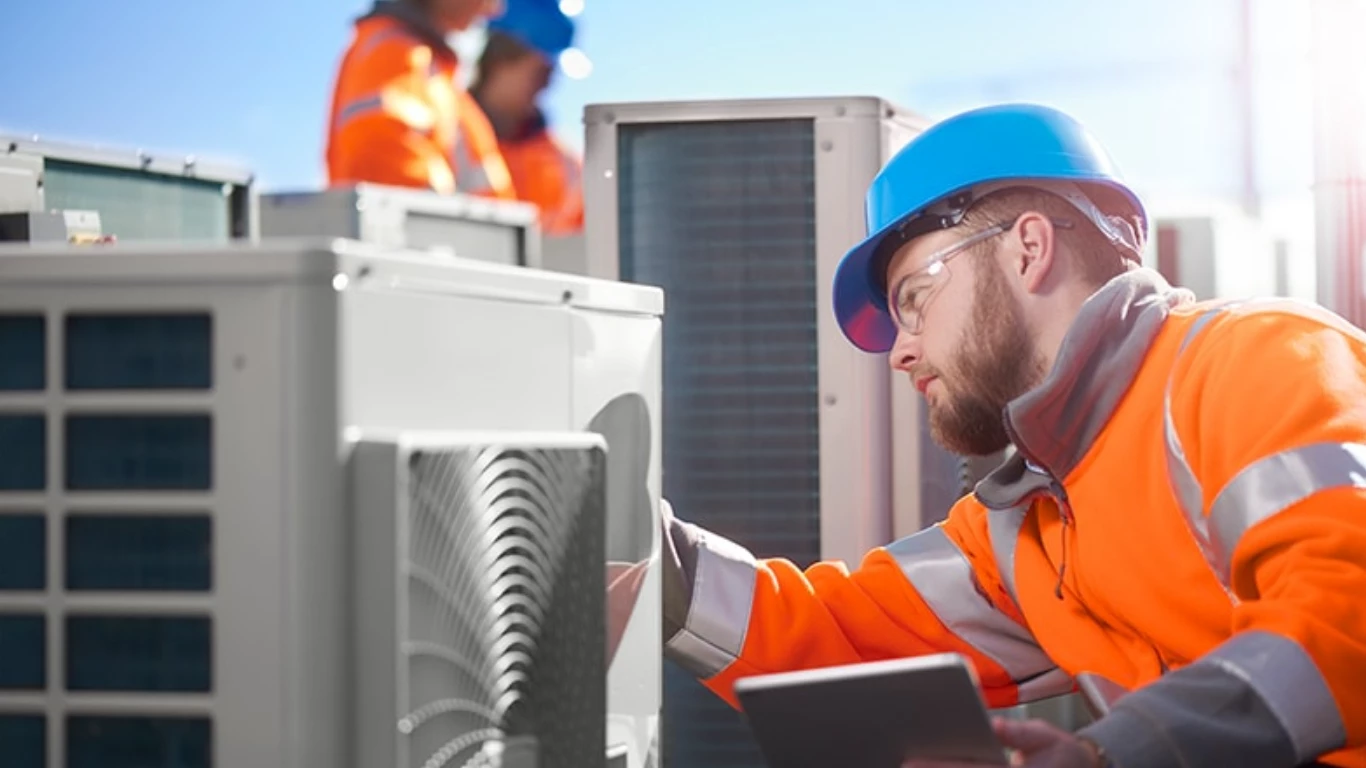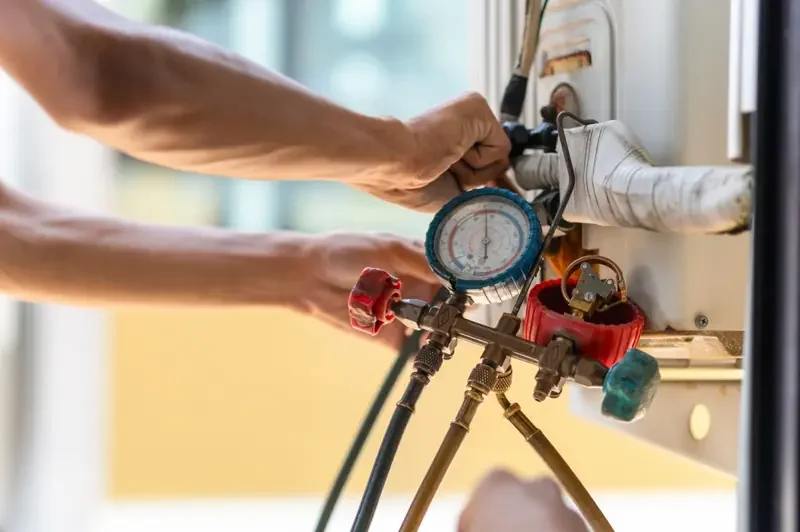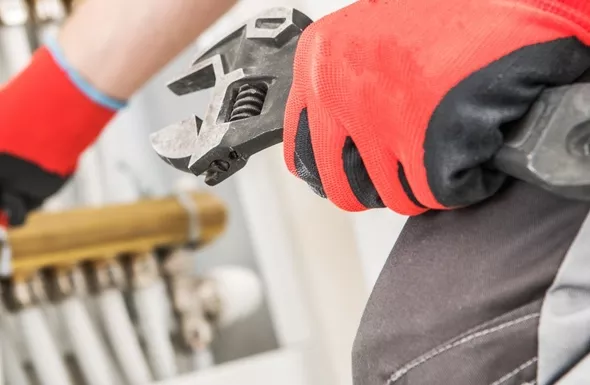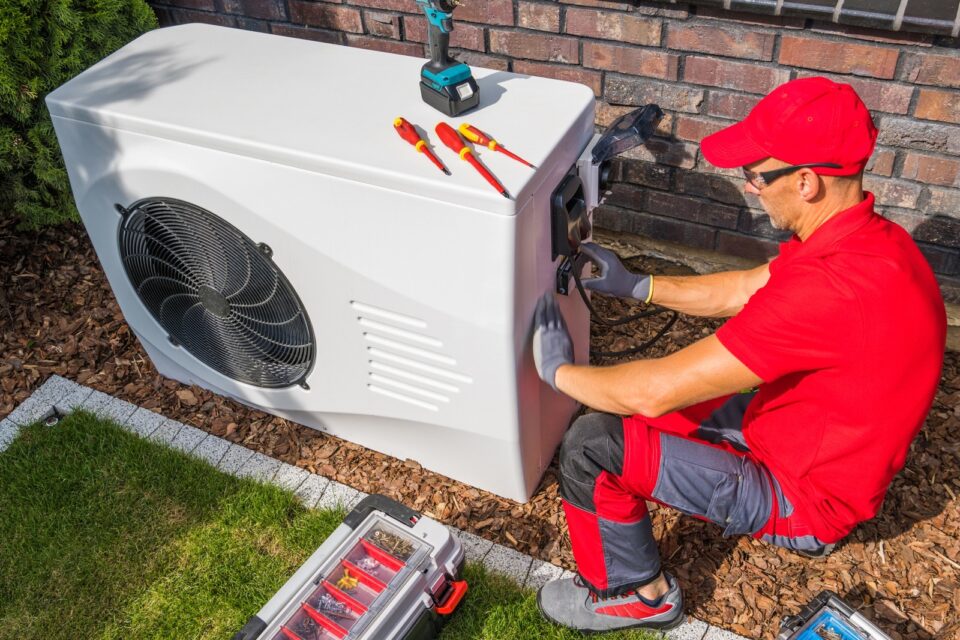Heat pumps have become a common household technology, widely used for both heating and cooling in modern homes. Their efficiency, eco-friendliness, and versatility make them an attractive alternative to traditional heating systems like furnaces or space heaters. Yet, the journey to their widespread adoption was not straightforward.
Heat pumps, as we know them today, are the product of over a century of technological innovation, overcoming challenges, and adapting to evolving environmental and economic demands. Let’s explore the hidden history of heat pumps, how this technology became a household essential, and the pivotal moments that shaped its development.
How Did Heat Pump Technology Evolve Over Time to Become a Household Essential?
The development of heat pump technology can be traced back to the early 19th century. At the heart of the heat pump concept is the ability to transfer heat from one place to another, a principle that laid the foundation for modern heating and cooling systems. While the modern heat pump was not a sudden breakthrough, it is the result of incremental advancements in physics, engineering, and material science. Here’s how heat pump technology evolved:
- The Early Beginnings: The Discovery of Heat Transfer The roots of heat pump technology can be traced to the work of early scientists who were fascinated by heat transfer. In the 19th century, scientists like Lord Kelvin (who formulated the first law of thermodynamics) and Michael Faraday (who explored the principles of refrigeration) made breakthroughs in understanding how heat can move between different environments. These discoveries became the cornerstone of the heat pump’s operation: extracting heat from one location and transferring it to another.
- The Rise of Refrigeration Technology in the Early 1900s By the early 20th century, refrigeration technology was becoming widespread in both industrial and residential applications. Refrigerators used a cycle of compressing and expanding gases to create a cooling effect. This cooling cycle is similar to how modern heat pumps work, but it was originally intended solely for refrigeration. During this time, engineers began experimenting with reversing this process to create heating systems.
- The First Heat Pump Patent in 1945, American engineer Robert C. Webber patented the first practical heat pump. Webber’s design was based on the concept of using refrigerants to transfer heat from the outside air to the inside of a home. Unlike traditional heating systems, which generated heat directly, Webber’s heat pump extracted heat from the outside environment and used it for indoor heating. This technology was revolutionary but also met with resistance due to the limitations of materials and efficiency.
- Technological Refinements in the 1950s and 1960s The heat pump technology improved significantly during the post-World War II era. Advancements in compressors, refrigerants, and electrical components made heat pumps more reliable and energy-efficient. In the 1950s and 1960s, residential heat pumps began to emerge in the market, primarily in warmer climates. They were still considered a novelty, but their efficiency in both heating and cooling, as well as their ability to replace both a furnace and air conditioner, garnered attention.
- Mainstream Adoption in the 1970s By the 1970s, energy crises and the push for more energy-efficient solutions spurred greater interest in heat pump technology. As fossil fuels became more expensive and the demand for energy conservation grew, heat pumps offered a more sustainable and cost-effective solution compared to traditional heating and cooling systems. The efficiency of heat pumps, particularly air-source models, was significantly improved during this period, leading to their broader adoption in homes, particularly in mild and moderate climates.
- Widespread Use in the 21st Century Today, heat pumps are commonly used in homes and commercial buildings around the world. Technological innovations such as ground-source (geothermal) heat pumps, which use the earth’s natural heat, have expanded the versatility of heat pump systems. With growing concerns over environmental impact and the need for energy efficiency, heat pumps have become a mainstream choice for homeowners seeking a more sustainable, cost-effective heating and cooling solution.
What Historical Innovations Contributed to the Development of Heat Pumps?
The evolution of heat pumps owes a great deal to several key historical innovations in various fields. Here are some of the critical developments that contributed to the birth and refinement of heat pump technology:
- The Discovery of Thermodynamics and Heat Transfer As previously mentioned, the foundation of heat pump technology rests in the understanding of thermodynamics, the branch of physics that deals with the movement and transfer of heat. Lord Kelvin’s law of thermodynamics and the laws of energy conservation paved the way for the first refrigeration systems, which were later adapted to heat pump technology. These fundamental principles made it possible for engineers to develop machines capable of transferring heat from one location to another.
- The Invention of the Compressor The compressor, which plays a central role in heat pump systems, was essential to their development. Early refrigeration devices, including the first mechanical refrigerators, used compressors to pressurize refrigerants and help transfer heat. This innovation allowed engineers to reverse the refrigeration cycle and create systems that could both heat and cool spaces, depending on the direction of the heat transfer.
- Refrigerant Technology The evolution of refrigerants played a significant role in the efficiency of heat pumps. Early refrigeration systems used toxic gases such as ammonia and sulfur dioxide. However, these were replaced with less hazardous chemicals like Freon (CFCs), which enabled safer and more efficient heat pump systems. More recently, refrigerants with lower global warming potential, such as R-410A and R-32, have been introduced to make heat pumps even more eco-friendly.
- Electrical Engineering and Control Systems As heat pumps became more common, advances in electrical engineering and control systems helped enhance their functionality and efficiency. The development of advanced thermostats, variable-speed compressors, and integrated circuit technology allowed heat pumps to become more responsive and energy-efficient, providing better comfort at lower operational costs.
Why are Heat Pumps Considered a Significant Advancement in Home Heating And Cooling?
Heat pumps are often considered one of the most significant advancements in residential heating and cooling for several key reasons:
- Energy Efficiency Heat pumps are known for their remarkable efficiency. Unlike traditional heating systems, which burn fuel to generate heat, heat pumps transfer existing heat from the air or ground. This process requires much less energy, meaning heat pumps can provide both heating and cooling at a fraction of the energy cost of conventional systems. For example, a heat pump can provide up to three times the amount of heat energy it consumes in electrical energy.
- Dual Functionality Heat pumps are unique in that they can both heat and cool a home. In the winter, they extract heat from the outside air (or the ground) and transfer it inside. In the summer, the cycle is reversed to extract heat from the inside and release it outdoors. This dual functionality eliminates the need for separate heating and cooling units, saving homeowners money on installation, maintenance, and energy costs.
- Environmental Benefits As concerns over climate change and energy consumption have grown, heat pumps have become an attractive solution for homeowners looking to reduce their carbon footprint. By using renewable energy sources like the air or the earth to transfer heat, heat pumps produce fewer emissions than traditional heating systems. This makes them an environmentally friendly choice in the quest for sustainable energy use.
- Reduced Operating Costs The operational costs of heat pumps are lower than those of traditional heating and cooling systems. Since heat pumps don’t generate heat, they consume less energy overall. They also last longer than many conventional systems, offering long-term savings on energy bills and maintenance costs.
What Challenges Did Early Heat Pump Designs Face During Their Development?
Despite their potential, early heat pump designs encountered several obstacles during their development, preventing them from being immediately accepted as viable alternatives to traditional heating systems. Some of the key challenges faced by early heat pump technology include:
- Low Efficiency and Reliability Early heat pumps were not as efficient or reliable as their modern counterparts. They struggled to deliver enough heating power in extremely cold weather, especially air-source heat pumps, which rely on extracting heat from the air. These early systems required frequent repairs and had a relatively short lifespan, which discouraged many homeowners from adopting them.
- High Initial Costs The initial installation costs of early heat pumps were quite high compared to traditional systems. The technology was still in its infancy, and the materials and components used were expensive. Additionally, homeowners were hesitant to invest in a new and unproven technology, especially when they were already familiar with conventional heating and cooling systems.
- Limited Consumer Awareness Heat pumps were not widely known or understood by the general public. Early marketing efforts were insufficient to educate consumers about the benefits of heat pumps, which led to limited demand. Homeowners were more comfortable with the tried-and-true methods of heating, such as furnaces and space heaters.
- Technological Limitations Many early heat pumps used refrigerants that were less effective and more dangerous than modern alternatives. Additionally, the compressors and motors in early heat pumps were often noisy and inefficient, leading to a less-than-ideal user experience. Over time, these issues were addressed through technological advancements, leading to the quieter, more efficient systems we use today.
The evolution of heat pump technology has been a remarkable journey, shaped by innovation, trial and error, and environmental pressures. What began as a conceptual idea in the 19th century has become one of the most energy-efficient and versatile solutions for home heating and cooling.
Today, heat pumps are an essential part of homes around the world, offering homeowners significant savings on energy bills while helping protect the environment. As technology continues to improve, the future of heat pumps looks even more promising, ensuring that this once-overlooked innovation will remain a critical part of the modern home for years to come.
Take Action for a Warm, Safe, and Efficient Home Today
Your home’s comfort and safety are non-negotiable, and keeping your heating system in top shape is essential to both. Don’t wait for an emergency to strike—schedule a heating system inspection or heat pump installation with Elite Air & Heat LLC today! Our expert technicians are ready to ensure your system runs efficiently and safely.
Contact us now for a free consultation or to request service. Let us be your partner in achieving year-round comfort, energy savings, and peace of mind. Don’t settle for less—choose a team that cares about your home’s safety and efficiency.





